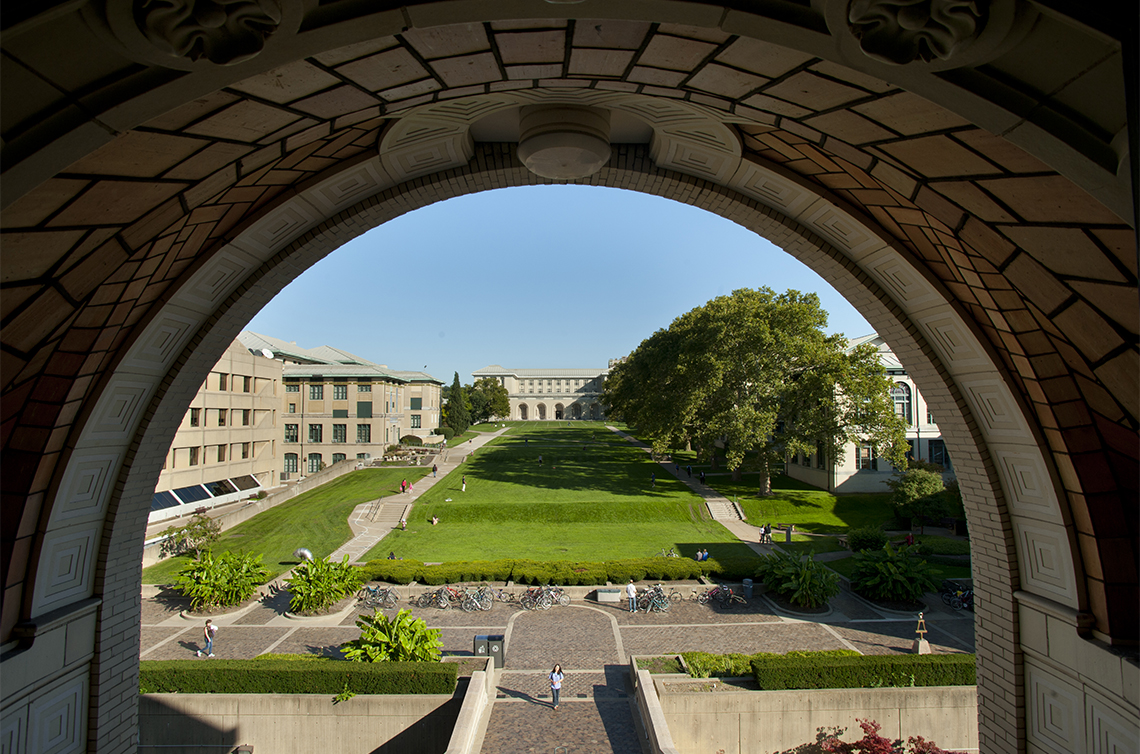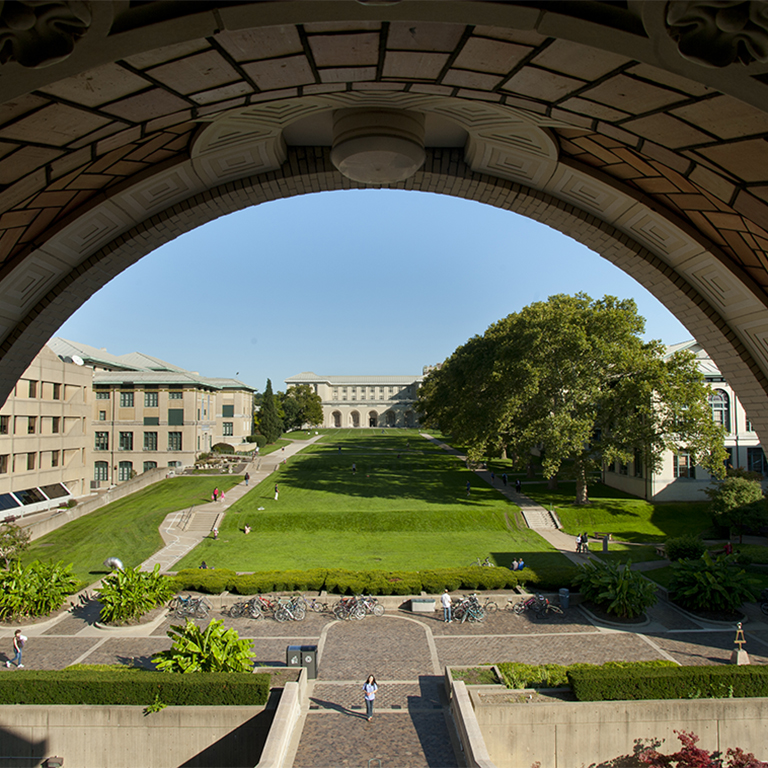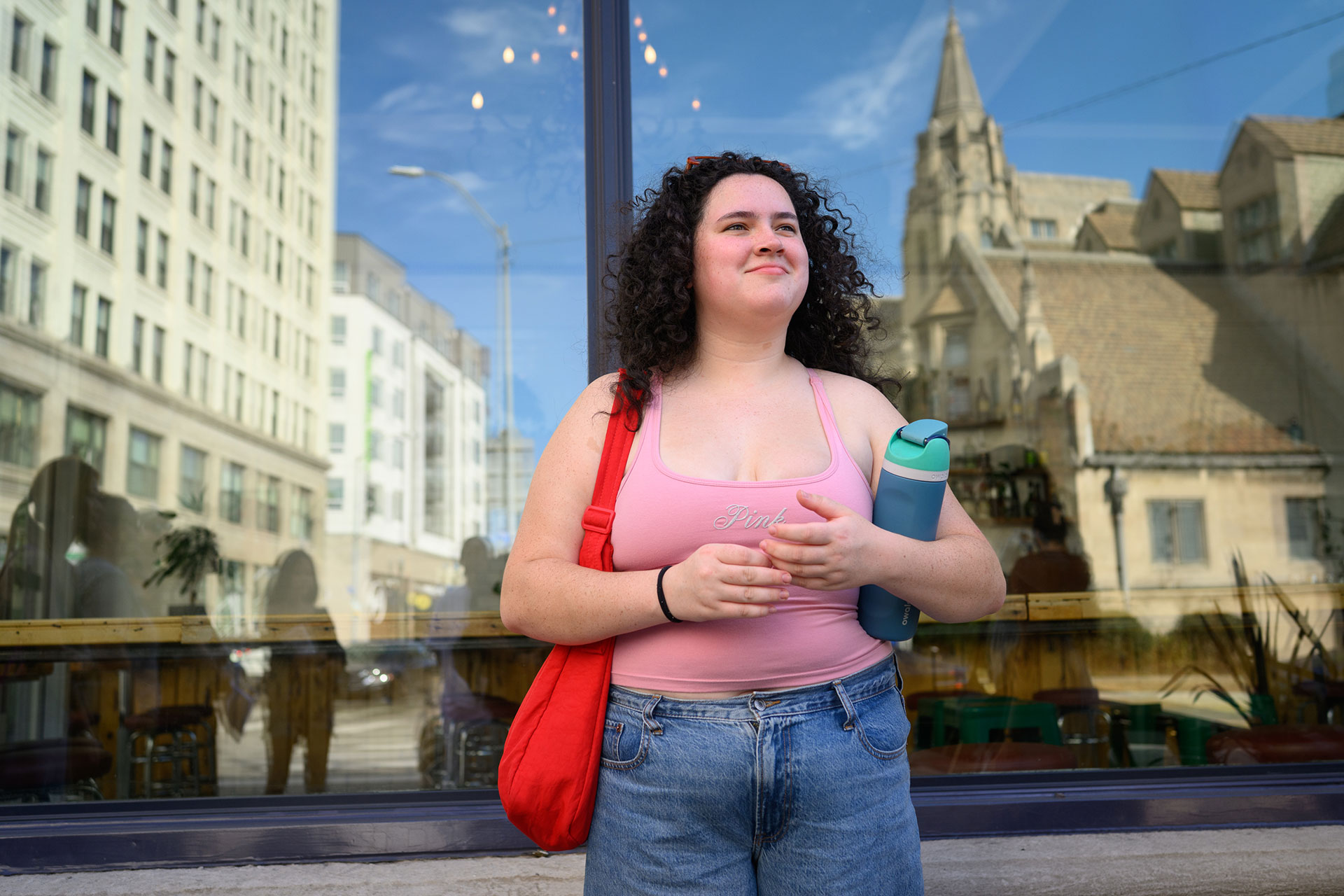
As part of Professor Britt Ransom’s course “Personal Narratives in Practice and Place,” students joined artist Adrian Jones on a tour of East Liberty, guided by his augmented reality archive celebrating the legacy of Black life in Pittsburgh.

Adrian Jones is an artist, creative technologist, and archivist whose work is grounded in honoring the lives of people often left out of official histories. In 2021, Jones began developing Looking Glass, an augmented reality app that creates a living archive of Black life in Pittsburgh, particularly in the East Liberty neighborhood. For more than three decades, the predominant population in East Liberty was Black — yet now, Black residents are estimated to make up just 35% of the neighborhood. Drawing from his background in engineering and software development, Jones is using digital storytelling to amplify the erasures that have shaped the neighborhood’s current development.

As users approach marked sites in the Looking Glass app, archival images, 3D renderings, and detailed descriptions of the communities and buildings that were once present appear on screen.
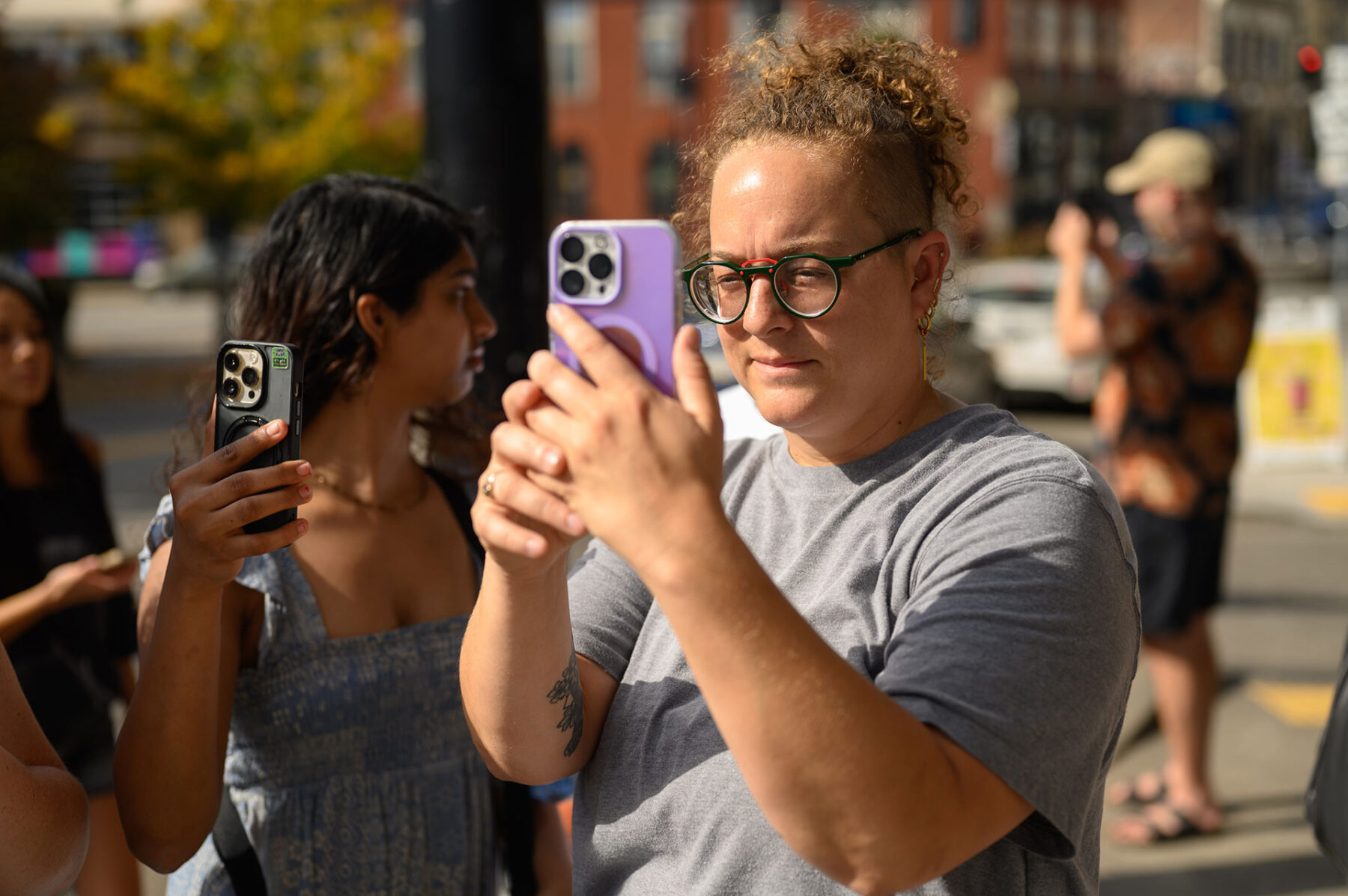
Professor Britt Ransom’s Advanced Studio course “Personal Narratives in Practice and Place” asks students to use their own histories, identities, and lineages as a starting point for artmaking. The East Liberty walking tour with Jones gave the class a chance to see how archival research can expand their understanding of the city where they currently live — and can inspire more context-driven work.

Students used the app to explore histories of three main sites of activism and community gathering from the 1960s to today: Penn Plaza Apartments, the 2020 Black Lives Matter protest site, and the Pittsburgh Friends of COFO.
Starting at the corner of Penn Ave and South St. Clair Street, the class began with the history of the Whole Foods Market location, once home to Penn Plaza Apartments. Built in 1966, the apartments were a longtime source of affordable housing for East Liberty families. In 2015, residents received 90-day eviction notices to make way for redevelopment, sparking tenant organizing and citywide protest. Despite these efforts, the buildings were demolished in 2017. Through Looking Glass, the apartment towers reappear in full, revealing the substantial footprint they once held along the avenue.
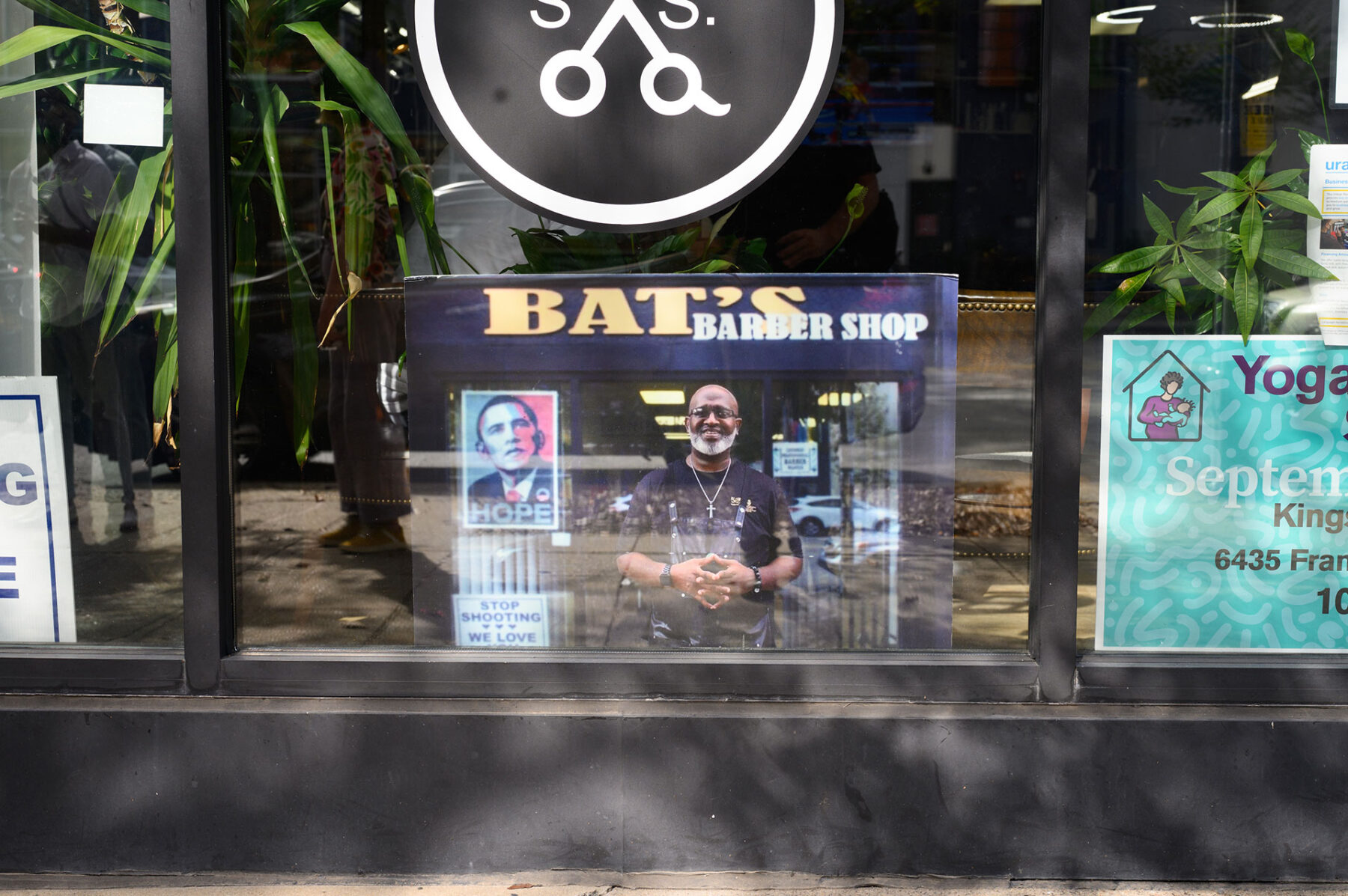
The tour also highlighted longstanding businesses along Penn Ave: Bat’s Barber Shop (now The Suite Spot), which for more than two decades was a galvanizing force in organizing neighborhood initiatives; Kelly Strayhorn Theater, a champion of BIPOC and queer perspectives in art and performance (its current exhibition “Calendar Girls in the House of Tilden” is curated by School of Art alum Harrison Apple); and the Shadow Lounge, a legendary venue for hip-hop, jazz, and poetry.

At the corner of Penn Ave and Centre Ave, the class stopped at a gathering place for Black Lives Matter protests following the murder of George Floyd in the summer of 2020. While peaceful demonstrations filled the neighborhood with calls for justice, clashes with police turned violent, with SWAT gear, tear gas, and mass arrests. These events marked East Liberty as both a site of mourning and a rallying point for community action.

Jones shared how the photography of Charles “Teenie” Harris became a touchstone in developing Looking Glass. Working for the Pittsburgh Courier from the 1930s through the 1970s, Harris created a sweeping visual record of Black Pittsburgh, portraying both prominent figures and everyday life with equal dignity. His 75,000-image archive at the Carnegie Museum of Art remains one of the most important resources for understanding the city’s past.

On Highland Ave, what is now a luxury apartment building with fast-casual dining was once a hub of grassroots activism. In the 1960s, the Pittsburgh Friends of COFO supported civil rights organizing in Mississippi, sending food, clothing, and supplies while also recruiting volunteers to work in Freedom Schools. Through Looking Glass, the group’s former East Liberty office reappears, revealing how everyday Pittsburghers contributed to national movements for justice.
At the corner of Highland Ave and Baum Blvd, the Shadow Lounge was East Liberty’s beating cultural heart from 2000 to 2013. Known for its open mics, jazz sets, slam poetry, and DJ nights, the club nurtured local talent (including artists like Mac Miller and Wiz Khalifa) while drawing acts from around the country. Jones shared that the inspiration behind his first experiment with AR also started here — with Professor Alisha B. Wormsley’s There Are Black People in the Future, originally part of Professor Jon Rubin’s The Last Billboard, erected in 2017 above the building where the Shadow Lounge once thrived.

For the students walking East Liberty with Jones, the tour was an invitation to encounter both what has been lost and what can still be carried forward, and a chance to envision Pittsburgh as a place where Black life is centered and celebrated.
Learn more about Adrian Jones’ Looking Glass project.
Photos by Justin Merriman. This class tour was supported by the Sylvia and David Steiner Invitation Grant through the Frank-Ratchye STUDIO for Creative Inquiry.

